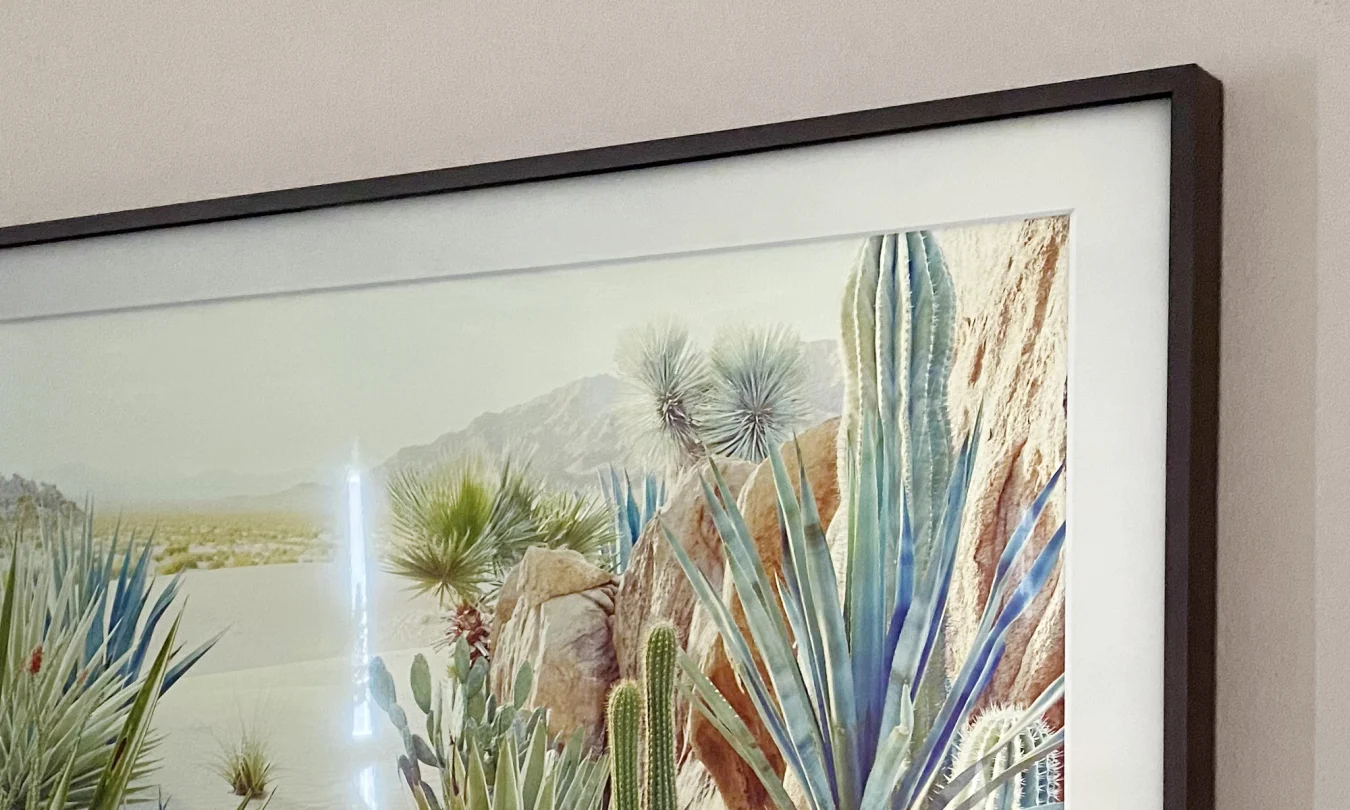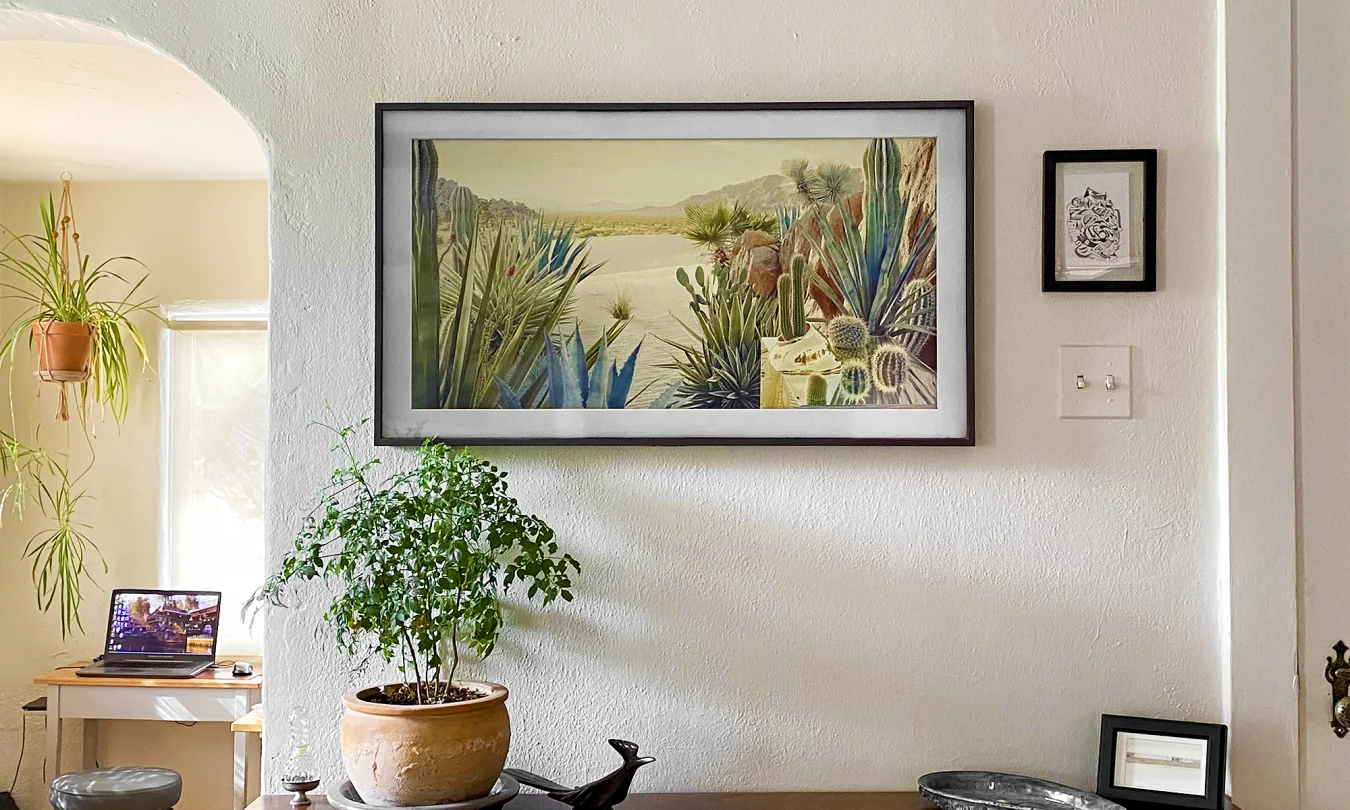All products recommended by Engadget are selected by our editorial team, independent of our parent company. Some of our stories include affiliate links. If you buy something through one of these links, we may earn an affiliate commission. All prices are correct at the time of publishing.
My first “adult” TV was a 200-pound CRT monstrosity that lived inside an even more monstrous, 300-pound cabinet with doors. After that, I upgraded to a monitor-and-laptop setup that stowed in the hidey compartment of my coffee table. The thing is, I loathe black mirrors; the blank void that stares out when a TV is off creeps me out. (I blame The Ring.) I decided all screens had to stay hidden if I wasn’t actively watching them and just avoided a wall-mounted TV altogether – until the market came up with one that looks like art when it's off.
Samsung’s The Frame came out in 2017. I bought a 43-inch model back in 2019 and have been a big fan ever since. On the inside, it’s a thoroughly serviceable smart TV with a QLED panel and Samsung’s Tizen OS (which the company just licensed for use with non-Samsung TVs). The picture is bright, the sound is clear, and Tizen is easy to figure out – but I forked over $800 for the namesake feature.
The Frame does a great job of looking like art hanging on my wall. The thin panel has picture-frame edges and mounts flat against the wall, like a giant photo. The panel connects via a thin wire to an external receiver/port hub/tuner box combo, which means you can actually drop the wire behind the drywall and have it pop out elsewhere, furthering the illusion that there’s nothing electronic going on here. The brick walls of my old house aren’t letting that happen, so I hide the wire behind a plant.

Amy Skorheim
As for the effect, I’ve had people come over who asked me whether we had a TV at all, standing just a couple feet from The Frame. It’s fun to turn it on and witness their total surprise. I will say I’m jealous of the latest models, which have an anti-reflective matte finish that I wish my older model had. I think it enhances the effect.
The Frame’s elegant hardware is a perk, but the other important factor in the art-not-TV illusion comes from Samsung’s Art Store, an $8 monthly subscription that grants access to a ton of art to display. There are collections from the Louvre (though picking a Vermeer to hang on your wall might stretch credulity) as well as the Museum of Fine Arts Budapest, Etsy, Life Picture Collection, Saatchi Art, van Gogh Museum Amsterdam, BBC Earth, Magnum photos and lots more. I tend to go with abstracts and modern photography, and my kid likes the illustrations and wildlife photos.
But if you (understandably) have subscription fatigue from the 25 different services you pay for and don’t want to add another to the list, the included “Samsung collection” offers 10 artworks for free. You can also use your own images if you prefer (just make sure they’re large format or they’ll look pixelated). Personally, I’ve never tried using my own images; I leave art to the professionals.

Amy Skorheim
I like to swap out the image a couple times a month, and can easily kill an hour picking the next piece of art to grace my walls. There’s an option that’ll rotate through all images in a collection, automatically switching at regular intervals, from every 10 minutes to once a week. I firmly believe adding a mat to the image makes it look more real. After you pick the image you want to display, you have the option of selecting no mat, a modern mat or a shadowbox mat. Both mats come in ten different colors, but I’ve never found anything that beats the antique white color in the modern mat option.
Considering the Frame is technically always-on, you may have reservations about the TV’s energy usage. In art mode, Samsung says a 65-inch Frame consumes about 50 watts of power. I’ve personally made a series of changes in life – downsizing square footage, trading a car for an e-bike, cutting out meat, etc. – to ease my carbon footprint, and I allow myself this minor indulgence. But if that aspect weighs on you, you could even consider the same carbon offsets people buy when they fly.
Plus, there are a couple of features that make sure the Frame isn’t always on. With Night Mode, the TV shuts itself off when the lights go out. Then in the morning, after sensing light again, it turns the art back on. You can also set it to detect when there’s motion in the room, turning off when no one’s around. When I tried this, my model kept turning off and never sensing motion again, despite me doing jumping jacks right in front of it, so I opted to disable that feature. The same sensors that detect darkness and (theoretically) movement also adjust the brightness of the image, so it never looks too intense, a trait that keeps things looking more like a framed oil painting and less like a TV. Which, for me, is the whole point.
https://ift.tt/F2KTqgU
Technology
No comments:
Post a Comment